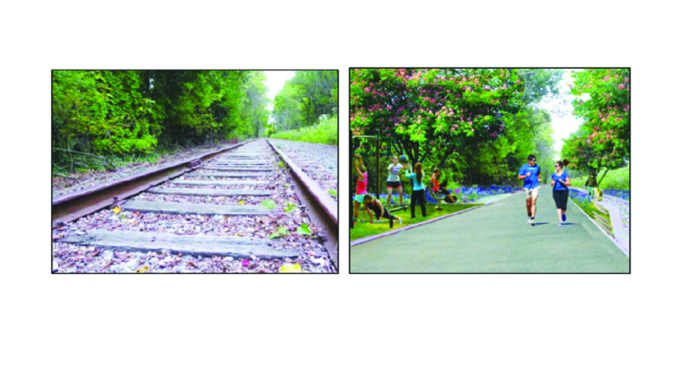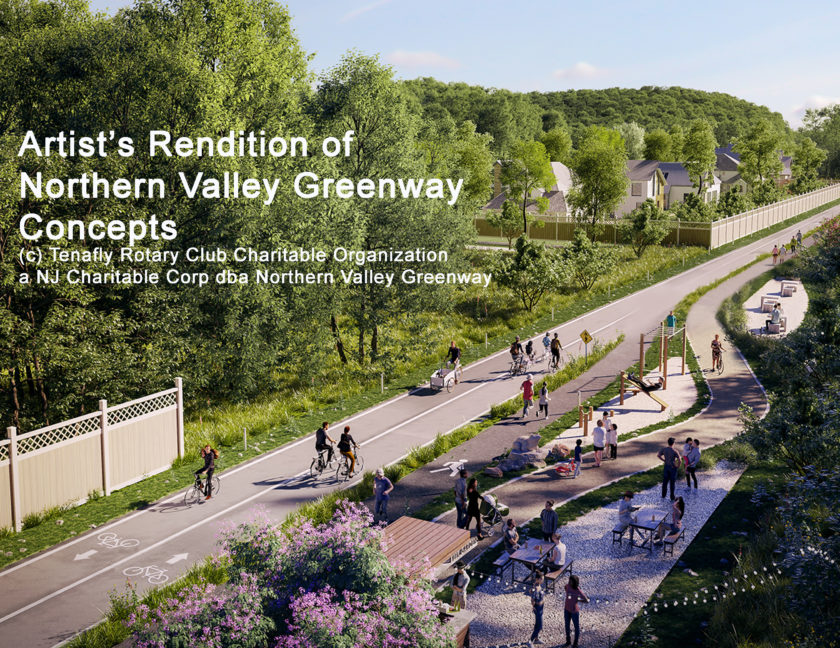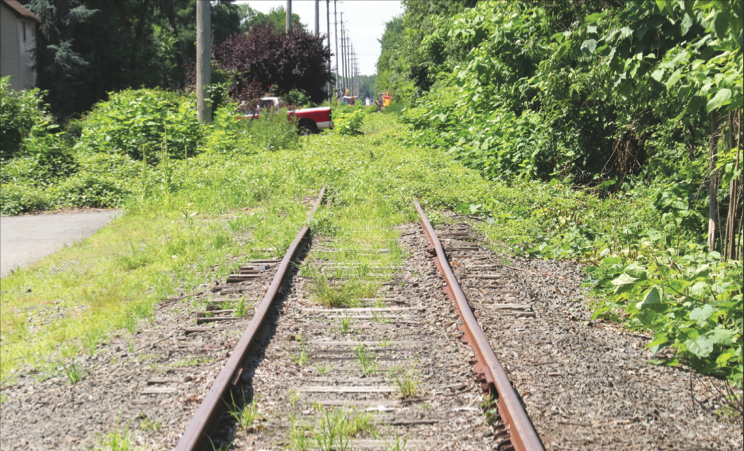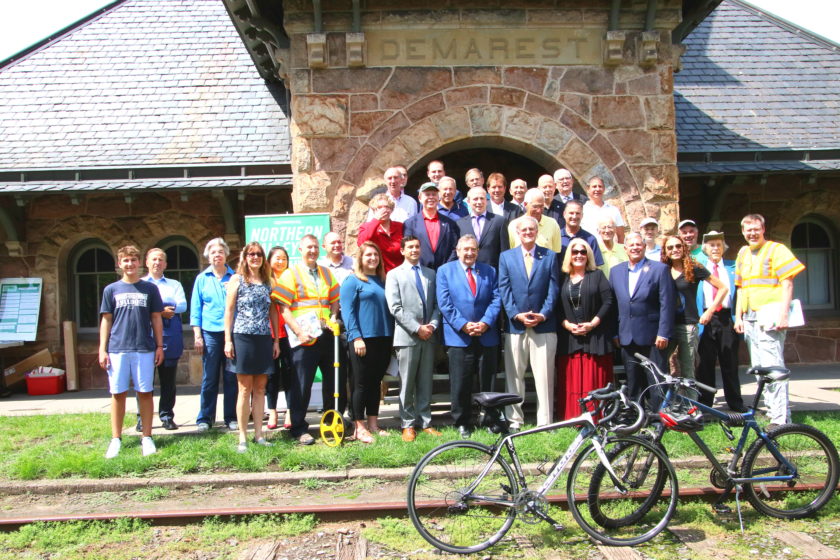
NORTHERN VALLEY AREA, N.J.—Nearly 14 months after receiving a grant to conduct a technical study of a possible 7.4-mile greenway spanning six northeast Bergen towns, a consultant’s report to be released this week finds a Northern Valley Greenway “generally feasible,” according to people familiar with the matter.
The report, which provides technical data on each of six “core” towns comprising the greenway, says next steps should include public outreach, developing a strategic plan, and eventual purchase and conversion of the unused rail corridor.
The technical report’s release is sure to kick off local discussions of both the pros and cons of a future greenway, along with the project’s overarching question: how to secure funding to purchase the unused CSX rail line that greenway planners hope to convert into a safe and secure pedestrian pathway for active and passive recreation.
Report meetings
The report was to be transmitted via email to mayors and public officials in the greenway’s six key towns and the report’s findings will likely be presented in each community by their representative on the Northern Valley Greenway interlocal committee.
No dates were yet confirmed for a first presentation of report findings, which was likely to occur sometime in early to mid-September, possibly beginning in Cresskill and Tenafly, including a presentation to Bergen County’s Board of Chosen Freeholders.
Support over four years
The greenway effort initially began four years ago when a teenager sent a letter wondering if the unused CSX rail line corridor might be repurposed into a greenway for safe bicycling after the death of another teenager killed by a truck while riding his bicycle in Cresskill.
The greenway idea quickly drew supporters, including Tenafly Rotary Club, which spearheaded efforts to build support and consensus for a multi-town, grassroots rails to trails project. Now the effort is supported by 12 towns—including six core communities it passes through—and hundreds of area residents.
The 222-page report by planning consultant NV5, hired by the state Department of Transportation last July to conduct the analysis, did not identify any potential fatal flaws that would prohibit conversion of an unused CSX rail line, defined the project and detailed three possible options, along with identifying paths for proceeding on a multi-year effort to build a greenway for bicyclists, pedestrians and joggers, according to people who have seen the report.

Three options detailed
The three alternatives include: a greenway and linear park, also called a “separate-speeds path”; a shared use path, which is a singular path shared by bikers, joggers and pedestrians; and a rail with trail path, which is the least-favored option.
The third alternative, rail with trail, is considered a “less realistic design alternative” because a trail with rail line isn’t wide enough for optimum use of bikers, joggers and pedestrians, plus the prospect of future light rail service seems decades or more away, and the current CSX rail line there is mostly not usable, said the study.
The first alternative design, a “separate-speeds path” was rated the highest among all participants at a March 2019 public input session held by state transportation department consultant, NV5, in Demarest.
The linear park design is generally 60 feet wide in most locations with separate paths for bicyclists, joggers and pedestrians.
In certain areas, where less path width is available, the size of the trails is reduced but three trails for individual use remain.
The second alternative, a shared-use path, is a mixed-speed single path mostly 16 feet wide but in places it can be as narrow as 6 feet depending on environmental and other constraints. This option would place all users on one path which all would share equally.
Public outreach
The report suggests following release, the Northern Valley Greenway committee should begin efforts to provide outreach for further project analysis, make efforts to progress toward a strategic plan and produce a final conceptual design with community input.
In addition to the six towns traversed by the greenway—Tenafly, Cresskill, Demarest, Closter, Norwood and Northvale—six other nearby towns previously passed a resolution to support the effort and the greenway’s impact will likely expand to encompass nearly 19 towns altogether.
At the March 2019 public input session, Englewood Mayor Michael Wildes expressed interest in Englewood’s possible inclusion in the greenway and at least one resident provided input to request Englewood be included in the greenway corridor.
Technical data revealed
The 222-page technical study provides four detailed chapters breaking down data and information including its draft purpose and need statement, opportunities and constraints, environmental review and a conceptual alternatives assessment.
Two appendices provide details on a stakeholder workshop held in September 2018 in Tenafly and a public input meeting held in March 2019 at Northern Valley Regional High School in Demarest.

Six towns involved
The report provides a town by town breakdown of trail lengths as well as possible trail widths throughout the 7.4-mile-long corridor, which includes 1.8 miles in Tenafly; 1.3 miles in Cresskill; 0.9 miles in Demarest; 1.1 miles in Closter; 1.2 miles in Norwood; and 1.1 miles in Northvale.
A future greenway could connect to the Joseph B. Clarke Rail Trail in New York State, and also provide a safe and secure pathway to 20 schools within a half-mile, eight libraries or community centers, and six downtowns or commercial business zones, said greenway planners who have seen the study.
The report, sources said, notes potential obstacles to a greenway that need to be overcome, including 17 street crossings (five signalized, 11 unsignalized and one off-road) that fall within different jurisdictions (nine local and eight in Bergen County), according to people involved in greenway planning.
The report also highlights environmental constraints in each town and identifies environmental permits likely before construction begins including wetlands, floodplains, stormwater management, historic preservation, and soil erosion control permits.
Following the report’s discussion over the next three to four months, the interlocal greenway committee will likely undertake development of a final greenway concept plan while at the same time negotiations continue with CSX representatives for purchase of its unused 7.4-mile rail line.
While no decision has yet been made by the greenway committee on what design option to select—or combination of design options—that’s not likely to occur for at least another six months following extensive public input, said greenway planners.
Meanwhile, and critically important, is following up on and securing county, state and federal grant funds—maybe even private philanthropy and donations—for continuing planning and design work needed to get a finished greenway concept plan and to conclude purchase of the unused CSX rail line.
Following the March public input session, greenway project advocates told Northern Valley Press that once a technical planning report is released—originally scheduled for June—a strategy will be developed to move forward. Part of these efforts include continuing contact with CSX to work out aspects of a railbanking agreement for the unused rail line.
Railbanking is a voluntary agreement between a railroad company and a trail organization to use an out-of-service rail corridor as a trail until such time as it’s needed for future rail service.
At a July 2018 project planning kickoff event held at Demarest’s historic train station, dozens of state, county and local officials showed support for the greenway planning efforts.

The event announced funding via a state DOT greenway planning grant and included political support from 39th District Republicans Senator Gerald Cardinale, Assemblywoman Holly Schepisi, and Assemblyman Robert Auth.
Also present were DOT officials, plus dozens of local public officials, mayors and Bergen County Executive James Tedesco III.
‘Very innovative idea’
Assemblywoman Schepisi (R-39) said she’s been a “strong supporter of [Northern Valley Greenway] since its inception” and that “this is a very innovative idea for repurposing a defunct railway no longer used by CSX.”
Schepisi said a greenway “is very attractive for the towns around it and a huge selling point for people looking to move into this area…it’s bipartisan and something very important to realize.”
Schepisi said preserving open space is critically important in New Jersey and much funding can be made available for “green projects” citing potential funding sources such as Green Acres and Blue Acres.
“This [greenway] does everything you’re supposed to do from a planning perspective, you utilize the designed space and you incentivize people to bike, walk and get outside and exercise,” she said.
“We should be doing everything and anything in our power to move this forward now,” she added, stressing a greenway offers immediate benefits to surrounding communities and residents.
“The taxpayers in our area are entitled to an area for a little recreation…and this [unused CSX line] is amenable to those things,” said Auth, who stood in support of a greenway last July and believes possible funds may be found from either state Blue Acres or Green Acres programs.
State budget funding?
He said it appeared once a final greenway design is developed by an engineering/architectural firm, the greenway interlocal committee can figure out various costs “and there may be some funding we can get in the next state budget. For me, that seems like the most preferred way to handle this [project funding],” he added.
Auth said once a greenway design plan exists, he would like to sit down with the interlocal committee and “position myself in any way that I can help it…if you start out early and make your requests for these types of things and get some agreement, that’s the way to do it.”
Auth said getting budget proposals in early is best and 2020 budget discussions start by early next year.
“This is great timing,” said Auth of the greenway report.
He said the report will likely kick off public interest and support for the effort. He said he could help reach out to assembly members and senators from both parties to help move along the greenway.
Cardinale (R-39) said the greenway concept “[is] the best use of this asset for the foreseeable future. Funds from the state are tight and the total needed is not well documented; [however], private donations are a good bet if the costs are kept under control.”
